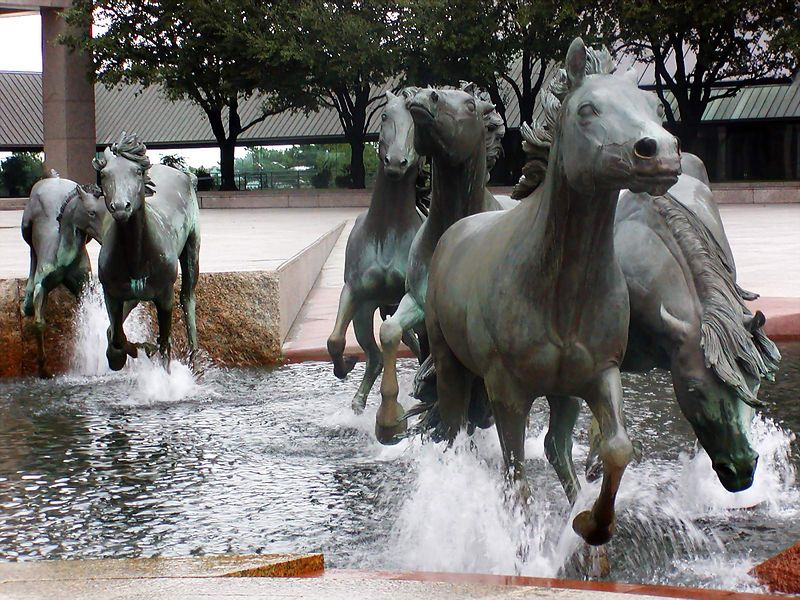The tribal wisdom of the Dakota Indians, passed from generation to generation, says that “When you discover that you are riding a dead horse, the best strategy is to dismount.” This analogy fits well the traditional HR function and its current and future relevance, too. The frequent, minor changes that the majority of HR leaders make in the HR function are getting them nowhere – they need a much more radical, comprehensive transformation that has an impact on the whole function. What are the signals showing HR transformation is needed? What is the point of HR transformation? What is the HR transformation about?

Prologue
In the last few years, I took part in many exciting HR transformations. The main driving force of these transformations were the HR function’s approach to business, to increase its efficiency and to reduce its costs. The nature of the current HR transformation – caused by disruptions and the pandemic – is different. Here the HR leaders have the opportunity to evolve and prove their strategic role and impact and to strengthen their business credibility. As HR leaders we are all at a crossroads. We have to decide whether we insist on the old frameworks that become obsolete very quickly, or we use new operating models, knowledge, skills and tools while we reimagine our working methods. Every organisation defines HR transformation in a different way. However, it is important to note that this transformation is not one single event or initiative but a process that lasts for years and requires all of us to have a new vision, approach, way of thinking, management style and behaviour.
In the next few weeks, I will guide you through the topic of redefining and re-encoding of HR.
The dead horse
According to my experience, there are two types of HR leaders.
One of them is future-oriented and business-minded who consciously watches the world, recognises changes fast and is able to imagine what advantages, possibilities and risks these external changes mean for the company and the organisation. They are the ones who understand the importance of quick adaptation and response; therefore, they seek more effective and quicker solutions and start to reshape HR function.
The other type is the reactive with a wait-and-see approach who has seen a lot of trends come and go. They are the ones who hope that this wave will also end one day, and they can get back to “business-as-usual” in HR function. Accordingly, sometimes they do some refining internally, but they do not plan any radical changes in the function. Riding on a dead horse, they do not notice (or too late) the critical signals that indicate the need for a change, such as when…
- the HR function is no longer able to adapt to the changed business environment and goals authentically and flexibly, to business operations undergoing transformation, to the expectations of internal and external stakeholders.
- the HR function slows down or only partially supports the company’s response to the rapidly changing market challenges – people, focus, relevance, speed – with its outdated approach and methods that often ignore business context and needs.
- the HR function is not able to create demonstrable business value and to cooperate proactively in the development and improvement of the company’s future and sustainable organisational capabilities.
The dead horse is not easy to get off – I mean to give up – and different methods of keeping it alive are being used in organisations. These include the use of a stronger whip (use more of the same thing), the employment of new riders (who are unable to break internal resistance despite repeated attempts), the use of external consultants (collecting advices in relation to the study, assessment and change of the horse, which is not followed by internal execution), consulting with HR leaders who are in a similar situation (wondering how others ride dead horses), lowering the standards (at a level where the dead horse is still much more competitive compared to a dead donkey) or approval for an increasing HR budget (spending more on unreasonable investment and training to boost the dead horse’ performance).
Despite the fact that in this given situation, the strategic importance of HR function is tiny in the eyes of business leaders, isolated activities appear from the managers’ side (because they do not get what they want, not the way they want or not on time), the HR budget is reduced, the HR leader is not integrated into the business – the reactive HR leader with a wait-and-see approach does not change anything.
„In the end, your horse isn’t dead until you get off it – even if it’s only walking you around in circles.”

HR transformation for strengthening HR strategic impact
The external conditions and the business are changing, therefore, the HR function needs to change with them. When we talk about HR transformation, we most often think about those activities by which we change the HR operation and introduce new solutions. These include e.g. recruitment, onboarding, employee experience, employee well-being, introduction of a new HR system, automation, digitalization or outsourcing of certain activities.
However, HR transformation is not the sum of the transformed HR activities, but the positive business impact and value of the measurable results of the transformed HR activities.
Those redefined HR activities that enhance one another’s impact and are in line with the business strategic objectives create operational excellence in the area of HR and they have a more significant strategic impact in the business (e.g. flexible adaptation, quality change in the organisational capabilities). They create business values if they influence the 5 most important business performance indicators: productivity, efficiency, quality, innovation, and customers.
Therefore, transformation or digitalization of HR activities independently from each other and from the business is not equal to HR transformation.
HR transformation for business transformation
The key element of transformation is the HR vision, that is the redefinition of HR’s mission, role and impact in the light of the future business needs, and continuously communicating it to the owners, leaders and employees. The HR vision contributes to the commitment and emotional identification of those participating in the transformation, and it can provide long-term dynamics and motivation for the HR team. David Hanrahan, CHRO of Eventbride said the following about his own HR vision in an interview: „I think of 21st-century HR as re-engineering people programmes towards humanity.”
To understand the process of HR transformation, I invoke the help of the American RBL Group’s methodology. They identify 4 items of the complex process of transformation:
- Understanding the external business environment: People working in the HR function need to be aware of how the business reacts to external demands and what business model they choose, considering the customers’ needs, dynamics in the industry, external trends, and the competitors’ actions.
- Defining expectations in relation to future results: The aim of this phase is for the HR function to understand its own perception of strengths and weaknesses “from the inside out” and then to identify those critical capabilities and business drivers that have a decisive influence on future HR priorities.
- The design of HR function: In this phase, the HR organisation’s key roles, structure, processes, tools, products, and flexible rules are made (including the use of innovative technological solutions and data-driven operation) so that they fit the given business needs as much as possible.
- Improving HR skills: The last step in the process aims at the self-improvement of the HR leader and their team members and at the development of those skills that make them strategic business partners (strategic orientation, adaptability, analytics, agility, augmented organizational intelligence, design, human (soft) skills). This includes the assessment of personal strengths, place of roles, rotation of jobs and strategic training.
During HR transformation, we should aim not for perfection but for the creation of an HR function that is flexible to meet business needs. The most practical is to introduce a circular operational/development model that starts with the interpretation of the current situation followed by the reimagination of possible solutions. It is worth modelling and testing the possible solutions before they are implemented. The introduction is closed by back testing and possible corrections. It is advisable, in certain phases of the transformation, to involve people working at other departments to achieve satisfactory business results.
Look back, but don’t stare
Be totally clear. Change requires action. For us, as HR leaders, to give our organisations business advantage in this revolutionary world, we are going to have to do something different, and that probably means something uncomfortable. In case of difficult, future-oriented decisions, it helps a lot to look back, that is to understand where we started and where we are now. Look back, but don’t stare.
Dare to saddle a new horse as soon as possible!
Inspiration: Judith Sills: The comfort trap


